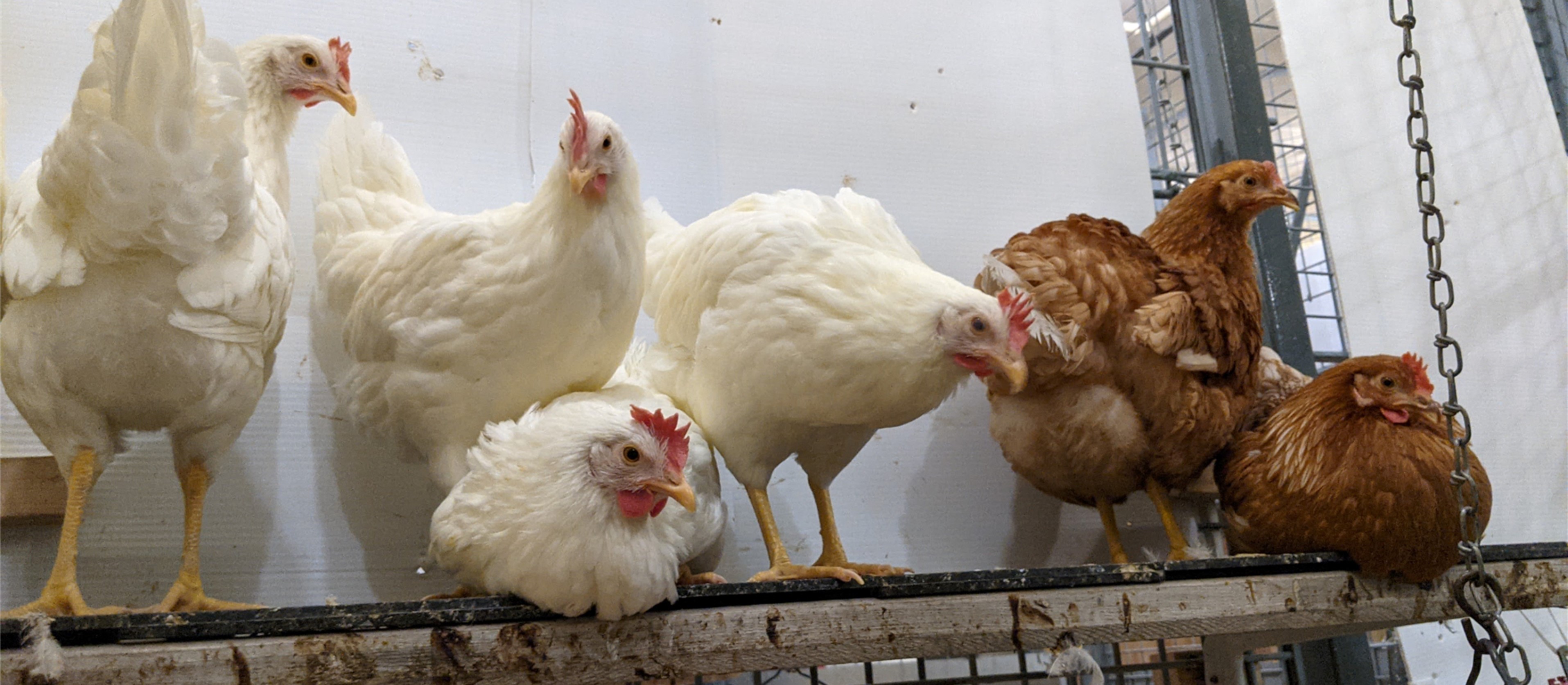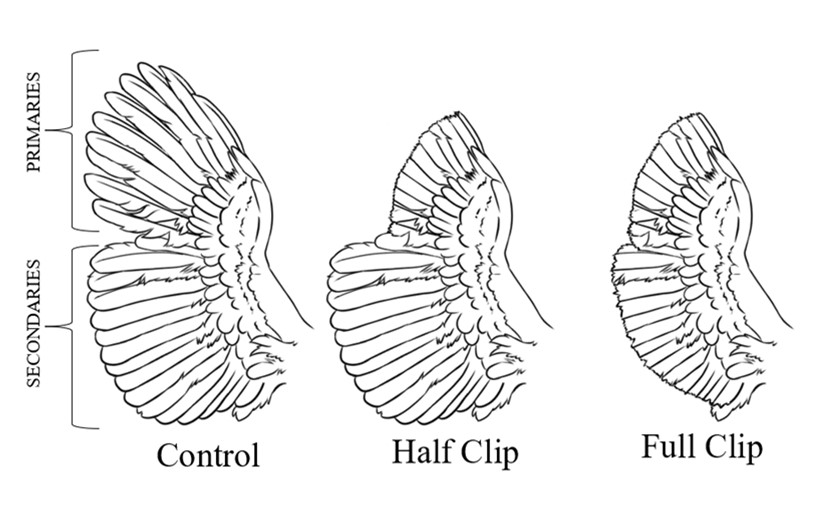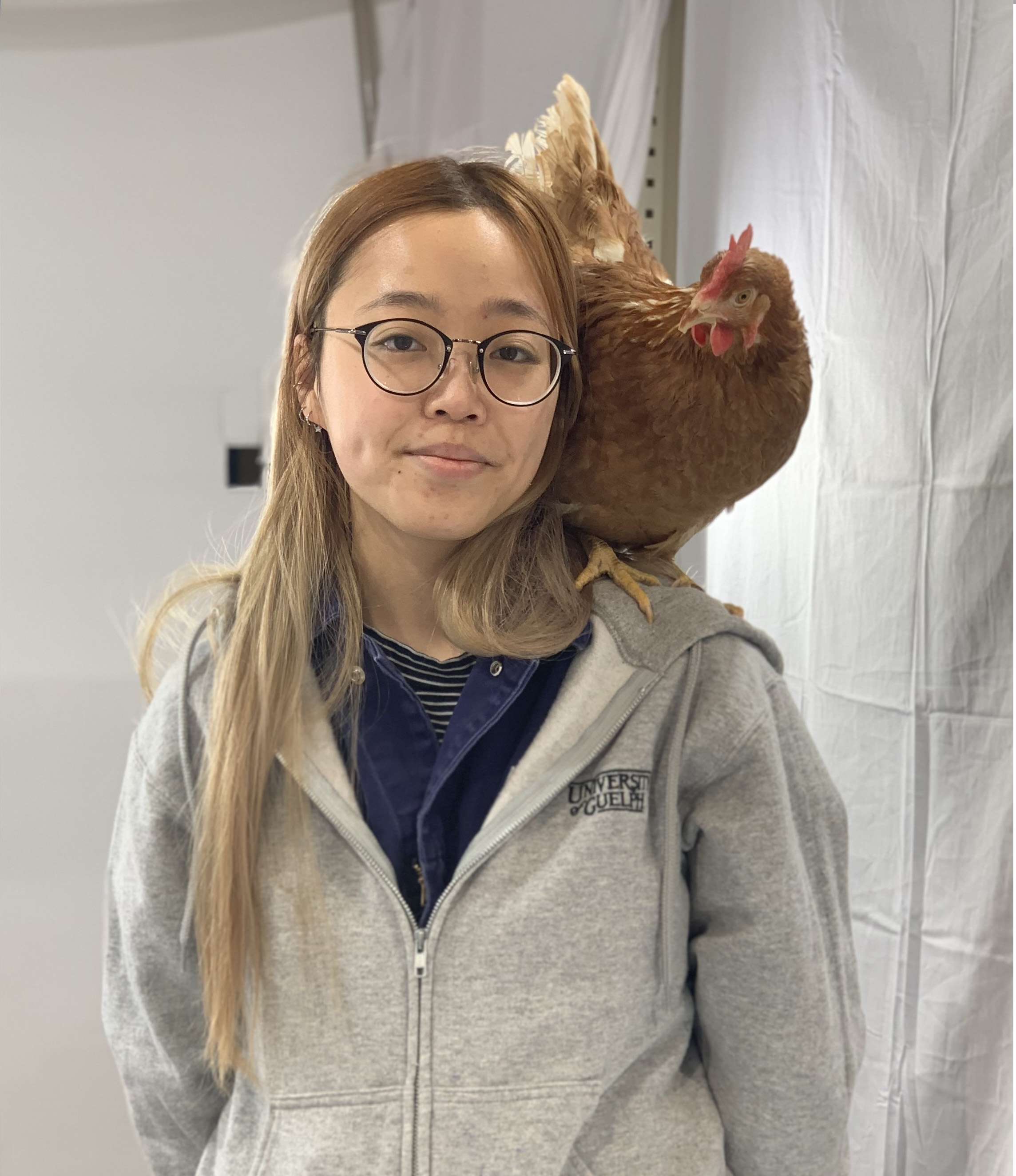
The Importance of Feathers in Laying Hen Flocks for Accessing Resources
By Grace Hong
M.Sc candidate (Animal Behavior and Welfare)
We can all agree that feathers and the ability to fly are some of the most defining features of birds, including those who produce our eggs – the laying hens. However, one of the major welfare concerns in the laying hen industry that may affect these defining features includes feather pecking and the subsequent loss of feathers. Feather pecking i.e., the plucking of feathers performed by hens on each other, can occur at rates as high as 95% among commercial flocks, targeting all parts of the body including the wing and tail feathers.
This is what the Harlander lab’s research aimed to address. In a new publication, recent M.Sc grad Renée Garant and her team of researchers looked at the effects of feather loss on the feeder and nest box choices of laying hens. As two different strains of hens were used, this experiment also gave the opportunity to look at the differences in the time spent at different resources between different strains of hens (white vs brown). They provided ground and elevated nest boxes and feeders in each pen and monitored the number of minutes each hen spent at each resource. To mimic feather loss of the wings, different clipping treatments were applied to hens at random. The control group was left with all wing feathers kept intact, the half-clip group had only their primary flight feathers clipped and the full clip group had both their primary and secondary wing feathers clipped on both wings. Garant et al. hypothesized that clipping the flight feathers would impact the use of elevated resources, especially affecting the brown feathered birds as they are naturally heavier compared to the white feathered birds.
To explore these hypotheses, 120 birds of two different strains (white and brown feathered) were kept in 12 identical floor pens with 10 birds of the same strain per pen. In order to monitor the hen’s usage of ground or elevated resources before and after treatment, radio-frequency identification (RFID) technology was used. Each hen wore a leg band containing a passive integrated transponder (PIT) tag. As an antenna plate was inserted into each feeder and nest box, the RFID technology was able to record each time a hen decided to access that specific feeder or nest box, tracking ground vs elevated resource use.

Garant et al. found that clipping status did affect the amount of time hens spent at resources. Elevated feeder use decreased by 41.8% while elevated nest box use decreased by 37% in white feathered hens who received the clipping treatments. Although there was no decline found in brown feathered birds in elevated feeder use, they did find that clipping status affected elevated nest box use by more than 50%. Meanwhile, all hens part of the control group had no significant changes in their time spent at elevated vs ground feeders and nest boxes.
The results of this study really highlighted the importance of feather coverage for industry flocks and the impact of feather loss on the ability to access preferred resources. The loss of flight feathers very much reduced the hen’s wing area and accentuated their inability to accommodate for this. This study also further emphasized the differences between the different strains of laying hens. While the white feathered hens in the control group were content to use the elevated feeders, the brown feathered hens primarily used the ground feeders even prior to the clipping treatment. These findings should be taken into consideration when designing the layout of housing systems for different strains in both backyard and industry flocks.
Journal Reference:
About the Author

Grace is currently completing her masters by thesis with the Harlander lab. Throughout her undergraduate career, she was able to learn more about the different aspects of the animal science world, where she found that her interests leaned more towards animal behaviour and welfare. In the past, she was able to work with a number of animals ranging from companion animals to livestock animals. As her undergraduate career came to a close, she realized that she wanted to further her learning and understanding through a M.Sc and gladly accepted the opportunity to work under Dr. Alexandra Harlander.
Her research will continue to look at the effects of feather loss and the subsequent decrease of wing use on the predictive muscle force of the pectoralis muscle of laying hens housed in aviary systems. The goal, along with other research produced by the Harlander Lab, is to further understand and address the concerns of feather pecking and keel bone damage in laying hen. This research is increasingly important as many countries, including Canada, shifts from conventional cages towards alternative housing systems.
An accessible PDF version of this story can be found here.